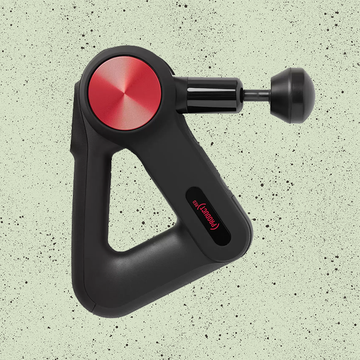Unfairly or not, Norfolk has a reputation as one of England’s sleepier counties. And in recent years, its once-celebrated car brand Lotus, whose HQ has been nestled amid farmland near Hethel since 1966, has appeared to be in a rather terminal slumber of its own.
The brand that ruled the 1960s and 1970s on the F1 track, while serving up innovative and accessible sports cars like the Esprit on the road and even providing a submersible version for James Bond in The Spy Who Loved Me, had acquired a somewhat dated feel, frozen in the era of the trouser press and fax machine. Lotus wasn’t quite at the Betamax stage, but you get the picture.
In 2017, its newest car on offer was the 10-year-old Evora, and there were no new models in the pipeline. As current managing director Matt Windle confirms, it was a company “on its knees”.
And then came an offer from Geely, the Chinese auto giant that had previously revived the fortunes of Volvo and launched its slick electric sister brand Polestar. The Geely approach, broadly, is to find an ailing brand and add value, with a view to an IPO further down the line.
Smelling salts were about to be administered, followed by a wet flannel to the face. The ensuing transformation is, according to Windle, unprecedented in the car business.
“You think, ‘Where do we start with this task?’” remembers Windle, a CAD operating apprentice at Lotus in the 1990s who returned when the takeover was announced. “Everybody coming into work was walking across a potholed carpark, which wasn’t brilliant in terms of mindset. So one of the first things we did was put down some new tarmac and went from there.”
When that rather hefty to-do list was first compiled, Lotus was producing 1,500 cars a year. In 2022, it’ll be 4,000, next year 10,000 and, thanks to a new plant in Wuhan, 150,000 are planned for 2027, by when all its cars will be electric.
“You say, ‘Is tomorrow OK?’ and [Geely] say ‘No, how about yesterday?’” Windle says. “The speed of change is incredible.”
One major problem was convincing long-serving staff that it was all legit. They’d seen a few false dawns, particularly in the wake of the infamous 2010 Paris Motor Show, when an outlandish management ploy to launch five cars and become a global powerhouse proved to be castles built from sand.
“Initially, it did get me down a bit that we weren’t getting the message across,” Windle says. “So, after a while, I realised that we just needed to demonstrate it through evidence.”
Exhibit A was the £2 million Evija, an all-electric hypercar that set the tone for a new air-sculpted design style and showcased Lotus’s electric and engineering prowess, honed via its consultancy arm, Lotus Engineering.
Next came the Emira, a £60,000-plus mid-engined two-seater that is being built in a new Hethel factory, with supercar looks that may have some higher-priced competitors feeling a little sweaty-palmed. It will be the last combustion-engine car Lotus produces.
The Emira also provided Lotus with a chance to prove its interiors game — never a strength in the olden days, but now essential. What self-respecting premium car brand doesn’t offer massaging seats and vegan trim?
Which brings us to the announcement of the Eletre, with a name that sounds like a mistake on a 14-year-old’s French test (apparently életre means “coming to life” in Hungarian), but is in fact a luxury electric SUV that will determine just how successful Lotus’s latest comeback will be.
“We wanted to make it so advanced and so appealing that it would draw new people to the brand, and then somebody might go, ‘Oh, they do sports cars as well,’” says Windle.
Of its future rivals, the aggressively styled Eletre feels spiritually closest to the Lamborghini Urus.
It’s aggressively fast, too: the sub three-second 0-60 time certainly justifies the “hyper” SUV status it’s carrying with it.
Visually, it continues the Evija’s aerodynamically carved panelling, which Lotus is calling “porosity”. As with Lotuses of the past, the designers have tried to get the mass over the wheels for the stance of “a mid-engined SUV”.
Lightness is another Lotus trademark, but not something that translates easily into the world of tech-laden people-carriers.
“I can promise you this is the heaviest Lotus ever,” says Windle, “but we have tried to make it the lightest in its category. As a full EV, the weight impacts directly onto range as well as performance.”
Lotus has clearly made a particular effort to create some stand-out tech moments, perhaps partly with hi-tech Chinese buyers in mind, but also just to show the world that it can.
The grille is made up of triangular petals that open up when needed to allow the battery pack to cool, and close when they aren’t to reduce drag. When the car unlocks as you approach, the grille performs this sequence as a little show for your entertainment, and perhaps that of any onlookers.
The Eletre will also be ready for Level Four autonomous driving — that’s the level when humans are only optional. The Lidar cameras that enable this are hidden from sight, only coming out of the roof when required in a manner that was apparently inspired by those famous pop-up headlights on the Esprit. How car brands now would kill for a retro reference like that.
“People say a Lotus shouldn’t have these driver aids, but why not?” says Windle. “Once you get out of the city and want to be a bit more adventurous with the driving, just turn it off.”
A super-hi-tech SUV certainly sounds a long way from the Lotus comfort zone, though Windle describes the process of developing it as “comfortable”, thanks to his prior experience and working alongside new teams in Europe and China.
Clearly Lotus is relishing its chance to mix it once more with the big guns, this time as an ambitious international operation rather than a plucky British underdog.
“Geely understands the value in Lotus being British,” says Windle, adding that “Volvo has never felt more Swedish.” The Eletre was officially designed in the UK, and London, not Beijing, was chosen for its global launch. And yes, the Lotus HQ remains, for now, in a freshly tarmacked corner of rural Norfolk.
lotuscars.com














